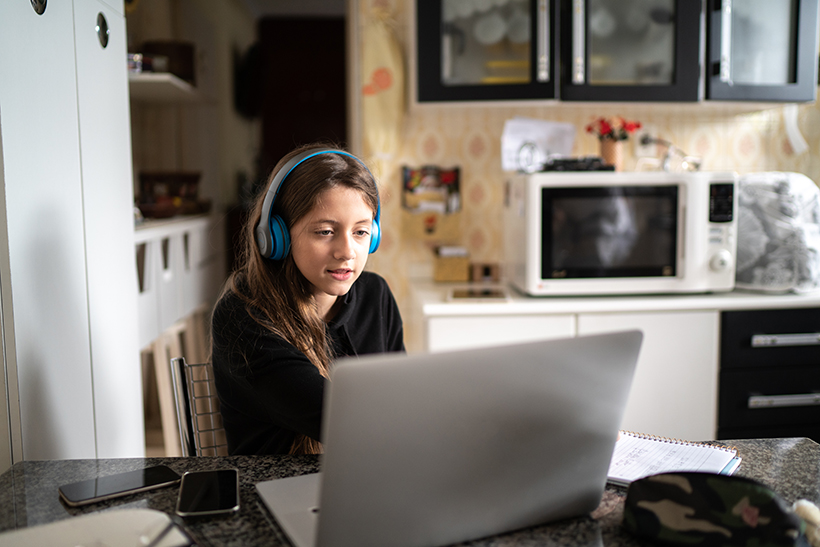This post was written by NCTE member Catherine Lipson.
I am a teacher educator in northern California, currently working with a cohort of Education Specialist intern teachers with placements at nonpublic schools where special education students were referred for behavior difficulties. For this group of students, some of whom have been impacted by past trauma, being mainstreamed in the “least restrictive environment” didn’t work out so well. My interns lead academic or vocational classes of six to ten middle school or high school students, normally assisted in each classroom by at least two paraprofessionals for behavior management.
Before March 2019, Chromebooks and iPads made infrequent appearances in their classrooms and none of the interns had any formal training in Google Classroom. Only a few of their students had prior experience with Google Classroom and none of their students had ever used Zoom.
Schools closed in California during Spring Break week, giving the interns a scanty window of opportunity to organize distance learning assignments. First- and second-year interns alike agreed that the first two weeks of online learning were rough! Getting Chromebooks to students’ homes and teaching them how to log in, plus learning how to use Zoom, added an extra layer of anxiety for students already affected by trauma.
In each “homeroom,” a few students initially refused to participate in Zoom conversations. There were also connectivity problems with unreliable Internet in some homes. About 90 percent of problems were ironed out over the first two weeks. For students who consistently had trouble with online connections, the paraprofessionals dropped off weekly packets and teachers held 1:1 phone meetings to explain each assignment. As a Practicum Supervisor, I observed group Zoom lessons every week and followed up with phone debriefs for each intern. I witnessed how interns managed Zoom breakout rooms so students could work 1:1 with paraprofessionals or service providers such as speech therapists, social workers, or psychologists.
There’s more I could say about how the interns accomplished teaching tasks, but I think it’s more important to share how students responded to the new learning environment. The consensus is, going online requires more, rather than less, time for students to complete each assignment.
The classroom management and positive behavior support efforts don’t magically go away once students finally figure out how to log in and start a lesson. Students need more frequent breaks than they did when working at school. They need more encouragement to persist with tasks. In the absence of the rewards, tangible or intangible, which students may be used to experiencing within the classroom setting, teachers need to plan something fun for students to discover online.
Making these reward moments specific to each student has been the biggest success for my interns. One intern recorded a video of the school yard so students could see birds coming to birdhouses they built together months ago. Another intern worked out with an exercise video during a Zoom session; when his students saw him exercising, it encouraged them to join the workout. The personalized details helped students overcome their anxiety and keep trying.
My interns have excelled at applying what they’ve learned about their students to customize their lessons for each student’s needs. They routinely go beyond the “Teacher Performance Expectations” jargon about differentiation, accommodations, and modifications.
What these teaching interns have learned about distance learning is how to overcome physical separation by showing students why learning still matters. They ask students: what parts of distance learning do you want to continue after everyone is back at school? For all of us, it’s essential to listen to what they tell us in the months to come.
 Catherine Lipson is a teacher educator at North Coast School of Education and San Francisco State University. Her research interests include disciplinary/content area literacy, integrating technology into literacy instruction, and student self-regulation and motivation during learning. For her dissertation, Integrating Technology into Literacy Instruction for Students with Disabilities: Perspectives of Teachers and Students, Lipson was chosen as a Shanahan Outstanding Dissertation Award Finalist by the International Literacy Association.
Catherine Lipson is a teacher educator at North Coast School of Education and San Francisco State University. Her research interests include disciplinary/content area literacy, integrating technology into literacy instruction, and student self-regulation and motivation during learning. For her dissertation, Integrating Technology into Literacy Instruction for Students with Disabilities: Perspectives of Teachers and Students, Lipson was chosen as a Shanahan Outstanding Dissertation Award Finalist by the International Literacy Association.

